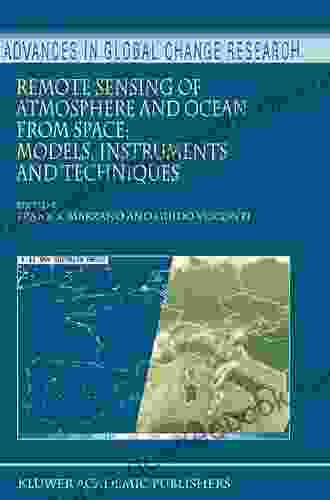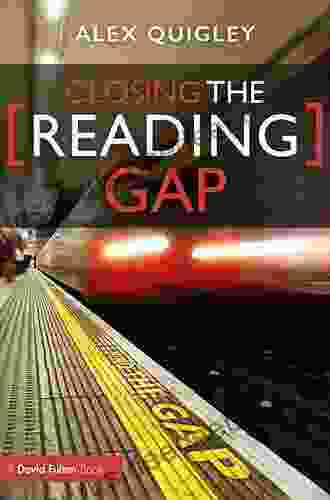Remote Sensing of Atmosphere and Ocean from Space: Unlocking the Secrets of Earth's Environment

Remote sensing is a powerful tool that allows scientists to collect data and images of Earth's surface, atmosphere, and oceans from space. By using satellites and other platforms, remote sensing provides a unique perspective on our planet, enabling us to study and monitor environmental changes in unprecedented detail.
4.4 out of 5
| Language | : | English |
| File size | : | 771 KB |
| Text-to-Speech | : | Enabled |
| Screen Reader | : | Supported |
| Enhanced typesetting | : | Enabled |
| Word Wise | : | Enabled |
| Print length | : | 210 pages |
| Lending | : | Enabled |
Principles of Remote Sensing
Remote sensing works on the principle that all objects emit or reflect radiation in different wavelengths. These wavelengths can be detected by sensors mounted on satellites or aircraft, which can then be used to create images and data maps of the target area.
There are two main types of remote sensing:
- Passive remote sensing measures radiation emitted by the target object, such as heat or light.
- Active remote sensing emits its own radiation and measures the reflected or scattered radiation from the target object, such as radar.
Applications of Remote Sensing
Remote sensing has a wide range of applications in environmental monitoring and research, including:
Atmosphere
- Monitoring weather patterns and forecasting
- Studying air pollution and climate change
- Detecting and tracking natural disasters, such as hurricanes and wildfires
Ocean
- Monitoring ocean currents and sea surface temperature
- Studying marine ecosystems and biodiversity
- Detecting and tracking oil spills and other marine pollution
Benefits of Remote Sensing
Remote sensing offers several advantages over traditional ground-based observation methods:
- Global coverage: Satellites can cover large areas of the Earth's surface, providing a comprehensive view of environmental conditions.
- Timely data: Satellites can collect data frequently, allowing for near real-time monitoring of environmental changes.
- Consistency: Satellite data is collected using standardized methods, ensuring consistent and reliable measurements over time.
- Cost-effective: Satellite remote sensing can be more cost-effective than ground-based observation methods, especially for large-scale studies.
Challenges and Future Directions
Despite its many benefits, remote sensing also faces some challenges:
- Data volume: The vast amount of data collected by satellites can be challenging to process and analyze.
- Data quality: Satellite data can be affected by factors such as cloud cover and atmospheric conditions.
- Data interpretation: Interpreting remote sensing data requires specialized skills and expertise.
Despite these challenges, remote sensing technology is rapidly advancing, with new sensors and platforms being developed to improve data quality and accessibility. The future of remote sensing is promising, with the potential to revolutionize our understanding of Earth's environment and provide valuable insights for sustainable resource management.
Remote sensing of atmosphere and ocean from space is a powerful tool that has transformed the way we monitor and study Earth's environment. By providing global coverage, timely data, and consistent measurements, remote sensing enables us to better understand the complex interactions between the atmosphere, ocean, and land. As technology continues to advance, the future of remote sensing is bright, with the potential to further our knowledge of Earth's environment and help us to address critical environmental challenges.
4.4 out of 5
| Language | : | English |
| File size | : | 771 KB |
| Text-to-Speech | : | Enabled |
| Screen Reader | : | Supported |
| Enhanced typesetting | : | Enabled |
| Word Wise | : | Enabled |
| Print length | : | 210 pages |
| Lending | : | Enabled |
Do you want to contribute by writing guest posts on this blog?
Please contact us and send us a resume of previous articles that you have written.
 Novel
Novel Page
Page Chapter
Chapter Text
Text Story
Story Reader
Reader Library
Library Paperback
Paperback Paragraph
Paragraph Sentence
Sentence Glossary
Glossary Preface
Preface Synopsis
Synopsis Manuscript
Manuscript Scroll
Scroll Codex
Codex Tome
Tome Bestseller
Bestseller Classics
Classics Library card
Library card Reference
Reference Encyclopedia
Encyclopedia Thesaurus
Thesaurus Narrator
Narrator Character
Character Resolution
Resolution Catalog
Catalog Card Catalog
Card Catalog Borrowing
Borrowing Stacks
Stacks Archives
Archives Periodicals
Periodicals Study
Study Research
Research Scholarly
Scholarly Academic
Academic Special Collections
Special Collections Study Group
Study Group Storytelling
Storytelling Theory
Theory Alex T Smith
Alex T Smith Cristian Vaccari
Cristian Vaccari Pushpendra Kumar Singh
Pushpendra Kumar Singh Peter D Mcdonald
Peter D Mcdonald Shel Silverstein
Shel Silverstein Hourly History
Hourly History Shirley Anne Warshaw
Shirley Anne Warshaw Mark Polanzak
Mark Polanzak Monica Arya
Monica Arya Gayl Jones
Gayl Jones Richard J Lipton
Richard J Lipton Christine Hauschild
Christine Hauschild Mark Price
Mark Price Aubrey Menard
Aubrey Menard Nc Marshall
Nc Marshall Sara Orwig
Sara Orwig Jeanette Farrell
Jeanette Farrell Robert J Werner
Robert J Werner Nigel Piercy
Nigel Piercy Joshua Tucker
Joshua Tucker
Light bulbAdvertise smarter! Our strategic ad space ensures maximum exposure. Reserve your spot today!

 Roger TurnerRetracing the Path of Gestalt Therapy: A Journey of Self-Discovery and Growth
Roger TurnerRetracing the Path of Gestalt Therapy: A Journey of Self-Discovery and Growth
 Darnell MitchellUnlocking the Magic of Joplin: A Comprehensive Guide to the Easy Piano Book...
Darnell MitchellUnlocking the Magic of Joplin: A Comprehensive Guide to the Easy Piano Book... Dawson ReedFollow ·18.5k
Dawson ReedFollow ·18.5k Jack PowellFollow ·9.1k
Jack PowellFollow ·9.1k Bryson HayesFollow ·13.1k
Bryson HayesFollow ·13.1k George HayesFollow ·9.5k
George HayesFollow ·9.5k Keith CoxFollow ·9.9k
Keith CoxFollow ·9.9k Joseph ConradFollow ·17.1k
Joseph ConradFollow ·17.1k Edwin CoxFollow ·11.4k
Edwin CoxFollow ·11.4k Harold BlairFollow ·16.1k
Harold BlairFollow ·16.1k

 Gary Reed
Gary ReedWeb to Web for Beginners: A Comprehensive Guide to...
In today's interconnected world, websites...

 Elliott Carter
Elliott CarterThe Moon Is Down: John Steinbeck's Poignant Portrait of...
In the annals of literature, John...

 Dalton Foster
Dalton FosterMark The Mechanic: The Incredible Story Of A Young...
In the vibrant realm of robotics, where...

 Fred Foster
Fred FosteriPhone 13 Pro Max User Guide: Everything You Need to Know
The iPhone 13 Pro Max...

 Rodney Parker
Rodney ParkerPope John Paul II: The Pocket Giant Who Inspired Millions
Pope John Paul II, or...
4.4 out of 5
| Language | : | English |
| File size | : | 771 KB |
| Text-to-Speech | : | Enabled |
| Screen Reader | : | Supported |
| Enhanced typesetting | : | Enabled |
| Word Wise | : | Enabled |
| Print length | : | 210 pages |
| Lending | : | Enabled |










